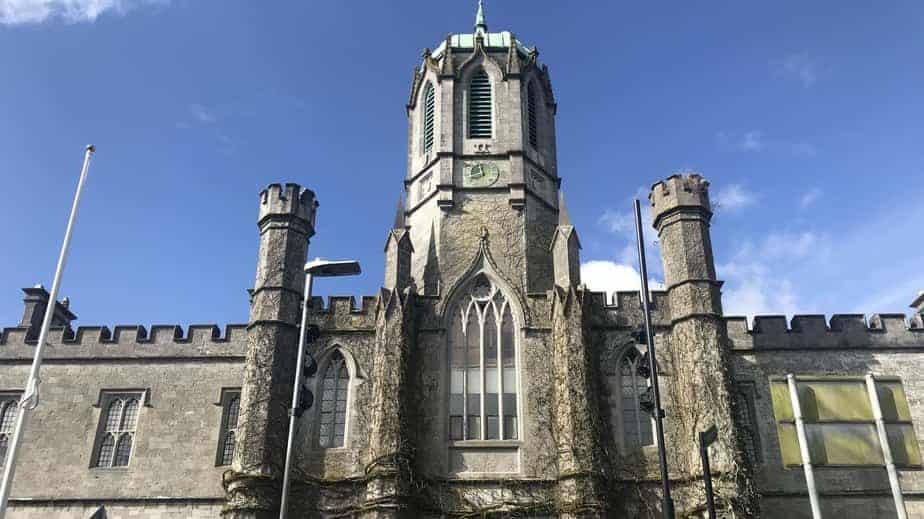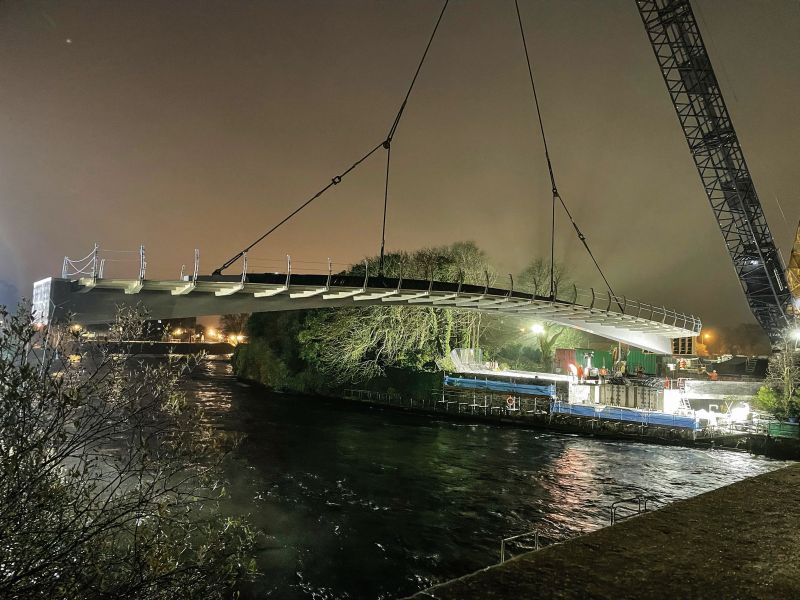CITY TRIBUNE
Hackers ‘extremely likely’ to attack as NUI Galway goes back online

The head of tech security at NUI Galway has said it is “extremely likely” the university will be targeted by hackers again when it begins to open up its IT systems to the internet over the coming days.
“It’s extremely likely even the same gang that attacked us, or friends of theirs, are likely to come in and have another go at us, so we have to have our security in a much better place than it was previously,” staff were told this week.
Many students are missing out on online classes and assignments because, while staff have also raised complaints that seven weeks on from the cyberattack, they still do not have access to wifi or servers within the university.
The college is continuing to work alongside KPMG’s Digital Forensics Incident Response Team, as well as Interpol and Gardaí – officials confirmed NUIG is always being “probed” by potential hackers looking for weaknesses in its IT systems.
Declan Staunton, Head of Research, Architecture and Strategy in the college’s ISS (Information Solutions and Services) Department told staff this week that internet connections are now being restored following the cyberattack in September.
He described it as “the most dangerous point” in the recovery of systems within NUIG because “communications pathways are being opened to the internet”.
The college shut down the majority of its IT infrastructure following the discovery of malware (malicious software used by hackers) – it has 6,000 PCs and 500 servers on its campus.
NUIG President Ciarán Ó hÓgartaigh admitted the college had been “knocked for six” by the attack.
The intended target within the college of the attack has been identified and the source is continuing to be investigated by tech experts along with Gardaí and Interpol.
College officials have stressed that it was not a ransomware attack – where hackers encrypt data and demand ransom to release it – because no data was accessed.
Speaking to staff this week, Declan Staunton described it as “quite a chaotic time” within the college.
He explained that the college is in the final phase of recovery from the cyberattack in which internet connections will be restarted. In the coming days, the college hopes to have “80-90%” back online, but it will be “well into the New Year” before all servers are back.
“This is the most dangerous point of the recovery, because the communications pathways are being opened to the internet and it makes it very likely we’ll get attacked again. We know for certain we’re always being probed.
“It’s extremely likely even the same gang that attacked us, or friends of theirs, are likely to come in and have another go at us, so we have to have our security in a much better place than it was previously,” Mr Staunton told staff.
He said the college has enhanced its threat monitoring software and introduced additional monitoring in its data centres which feeds information constantly to an external company.
John Gill, Chief Operating Officer of NUIG, accepted the attack and the recovery process had been long and frustrating, but necessary to allow it to happen safely.
“The recovery process has been painstaking. Our view, as informed and advised by KPMG, was that the last thing you want to do is recover quickly and have the malware still evidence or still present in your environment and allow it back into action.
“The decision was taken to shut down the university network to disable it from the internet – the purpose of that was to contain the attack and limit any potential damage the malware might cause.
“On hindsight, that decision was a very wise one, as it achieved containment and prevented the malware from communicating with external sources and encrypting out data, which was critically important,” Mr Gill said.
The university contacted other cyberattack victims, including the HSE, to learn from their experiences.
According to NUIG authorities, ‘wired’ access to the internet has been restored on teaching PCs, in PC suites and in the library.
However, staff and students have complained that wired access has still not been restored in many parts of the campus, and that they cannot connect to temporary wifi hotspots.
CITY TRIBUNE
Galway ‘masterplan’ needed to tackle housing and transport crises

From the Galway City Tribune – An impassioned plea for a ‘masterplan’ that would guide Galway City into the future has been made in the Dáil. Galway West TD Catherine Connolly stated this week that there needed to be an all-inclusive approach with “vision and leadership” in order to build a sustainable city.
Deputy Connolly spoke at length at the crisis surrounding traffic and housing in Galway city and said that not all of the blame could be laid at the door of the local authority.
She said that her preference would be the provision of light rail as the main form of public transport, but that this would have to be driven by the government.
“I sat on the local council for 17 years and despaired at all of the solutions going down one road, metaphorically and literally. In 2005 we put Park & Ride into the development plan, but that has not been rolled out. A 2016 transport strategy was outdated at the time and still has not been updated.
“Due to the housing crisis in the city, a task force was set up in 2019. Not a single report or analysis has been published on the cause of the crisis,” added Deputy Connolly.
She then referred to a report from the Land Development Agency (LDA) that identified lands suitable for the provision of housing. But she said that two-thirds of these had significant problems and a large portion was in Merlin Park University Hospital which, she said, would never have housing built on it.
In response, Minister Simon Harris spoke of the continuing job investment in the city and also in higher education, which is his portfolio.
But turning his attention to traffic congestion, he accepted that there were “real issues” when it came to transport, mobility and accessibility around Galway.
“We share the view that we need a Park & Ride facility and I understand there are also Bus Connects plans.
“I also suggest that the City Council reflect on her comments. I am proud to be in a Government that is providing unparalleled levels of investment to local authorities and unparalleled opportunities for local authorities to draw down,” he said.
Then Minister Harris referred to the controversial Galway City Outer Ring Road which he said was “struck down by An Bord Pleanála”, despite a lot of energy having been put into that project.
However, Deputy Connolly picked up on this and pointed out that An Bord Pleanála did not say ‘No’ to the ring road.
“The High Court said ‘No’ to the ring road because An Bord Pleanála acknowledged it failed utterly to consider climate change and our climate change obligations.
“That tells us something about An Bord Pleanála and the management that submitted such a plan.”
In the end, Minister Harris agreed that there needed to be a masterplan for Galway City.
“I suggest it is for the local authority to come up with a vision and then work with the Government to try to fund and implement that.”
CITY TRIBUNE
Official opening of Galway’s new pedestrian and cycle bridge

The new Salmon Weir pedestrian and cycle bridge will be officially opened to the public next Friday, May 26.
Work on the €10 million bridge got underway in April 2022, before the main structure was hoisted into place in early December.
A lunchtime tape-cutting ceremony will take place on Friday, as the first pedestrians and cyclists traverse the as-yet-unnamed bridge.
The Chief Executive of Galway City Council, Brendan McGrath, previously said the bridge, once opened, would remove existing conflicts between pedestrians, cyclists and traffic “as well as facilitating the Cross-City Link public transport corridor over the existing 200-year-old bridge”.
The naming of the new bridge has been under discussion by the Council’s Civic Commemorations Committee since late last year.
One name that has been in the mix for some time is that of the first woman in Europe to graduate with an engineering degree – Alice Perry.
Ms Perry, who was from Wellpark, graduated from Queen’s College Galway (now University of Galway) in 1906. The university’s engineering building is named in her honour.
The bridge was built by Jons Civil Engineering firm in County Meath and was assembled off-site before being transported to Galway. Funding for the project was provided in full by the National Transport Authority and the European Regional Development Fund.
(Photo: Sheila Gallagher captured the city’s new pedestrian footbridge being raised on the south side of the Salmon Weir Bridge in December. It will officially open next Friday, May 26).
CITY TRIBUNE
Minister branded ‘a disgrace’ for reversing land rezoning in Galway City

From the Galway City Tribune – Minister of State for Local Government and Planning, Kieran O’Donnell was labelled a “disgrace” for overturning councillors’ decisions to rezone land in the new City Development Plan.
Minister O’Donnell (pictured) confirmed in a letter to Council Chief Executive Brendan McGrath last week that he was reversing 25 material alternations made by councillors to the CDP 2023-29. He made the decision on the advice of Office of Planning Regulator (OPR).
Minister O’Donnell directed that 14 land parcels that were subject to land-use zoning changes by councillors as part of the Material Alterations to the Draft CDP should be reversed.
He directed that a further 11 land parcels in the city should become “unzoned”.
The Minister found that the CDP had not been made in a manner consistent with recommendations of the OPR, which required specific changes to the plan to ensure consistency with the national planning laws and guidelines.
At last week’s Council meeting Cllr Eddie Hoare (FG) asked for clarity on the process by which councillors could rezone the lands that had been changed by the Minister’s direction.
Cllr Declan McDonnell said, “What he [Minister O’Donnell] has done is an absolute disgrace”.
And he asked: “Do we have to have another development plan meeting to deal with it?”
Both Cllrs Hoare and McDonnell wondered what would become of the lands that were rezoned or unzoned by the ministerial direction.
Mr McGrath said the Council had put forward an argument in favour of retaining the material alterations in the plan, but ultimately the Minister sided with OPR.
He said if councillors want to make alterations to the new plan, they could go through the process of making a material alteration but this was lengthy.
The Save Roscam Peninsula campaign welcomed the Minister’s decision.
In a statement to the Galway City Tribune, it said the direction would mean the Roscam village area on the Roscam Peninsula will be unzoned and a number of land parcels would revert back to agriculture/high amenity.
A spokesperson for the campaign said: “the material alterations made by city councillors following lobbying by developers continued the long-standing practice of councillors facilitating a developer-led plan rather than an evidence- and policy-based plan that meets the needs of the city.
“The Minister’s direction is an important step in restoring confidence in the planning system. It is clear from the City Council’s own evidence on future housing projections that there was no requirement to zone these lands for residential purposes in order to meet the needs of the targeted population increase up to 2029,” the spokesperson added.









